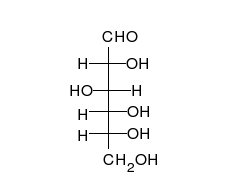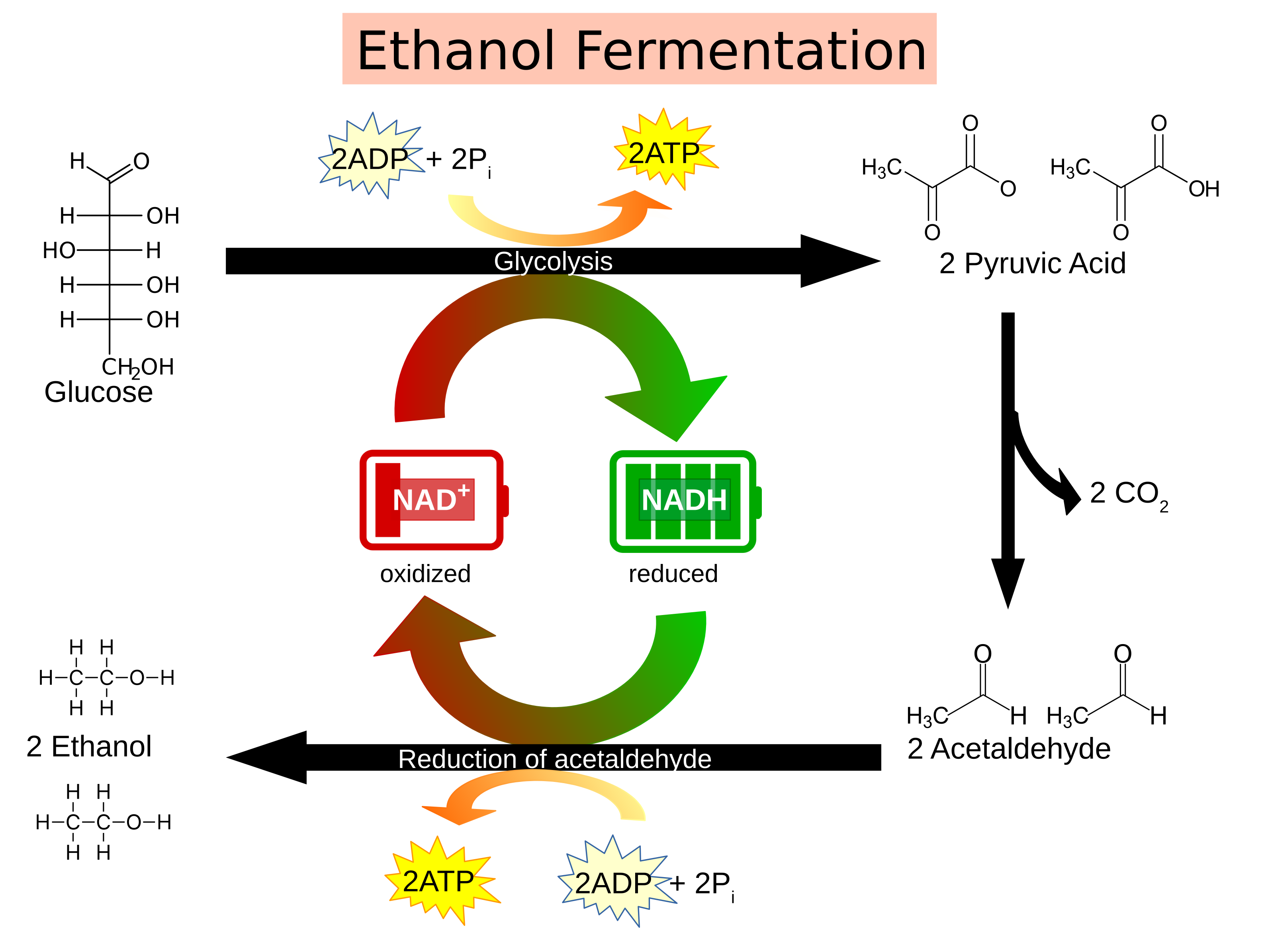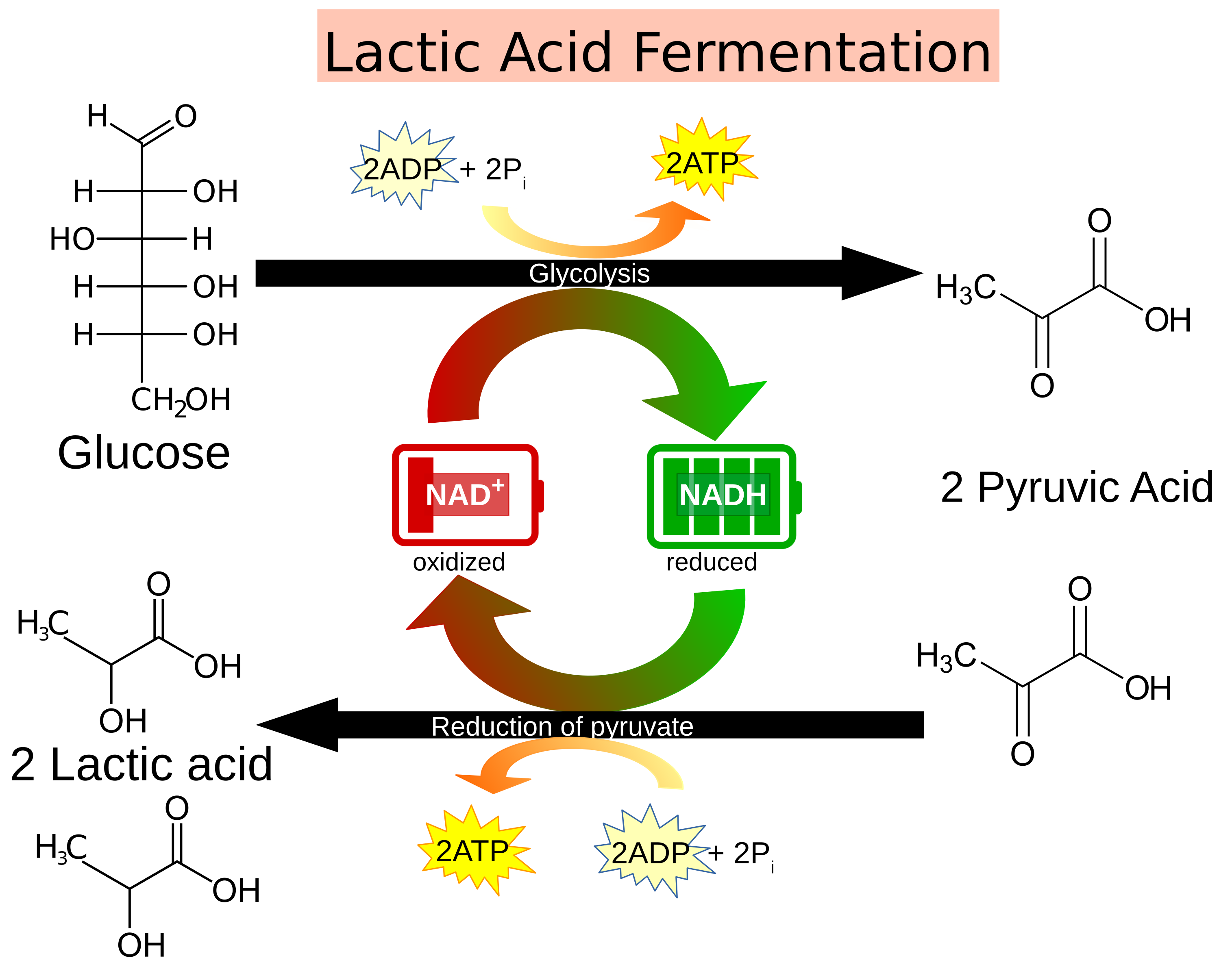in the absence of respiration, what reactions can cells operate to make atp? select all that apply.

Energy is stored in the bonds of the carbohydrates. Breaking these bonds releases that energy. Crushing sugar crystals creates tiny electric fields that give off invisible ultraviolet lite. The wintergreen chemical (methyl salicylate) gets excited past these excited electrons and fluoresces in a visible blue wavelength. This phenomenon is called triboluminescence.
Glycolysis
Glucose is the preferred carbohydrate of cells. Glycolysis ( glyco – sugar; lysis – splitting) is a universal process of all cells that occurs in the cytosol whereby the glucose (a half-dozen-carbon carbohydrate) is split into two pyruvate (a iii-carbon molecule) molecules to generate ATP and reduced NADH. ATP (adenosine triphosphate) is the energy currency of the prison cell that stores chemical free energy in 3 high free energy phosphate bonds. NADH (reduced nicotinamide adenine dinucleotide) is a loftier energy electron carrier that acts equally a coenzyme in reactions and equally a rechargeable battery of sorts. The uncharged state that is non carrying high energy electrons is chosen NAD + .



Fermentation
In the absence of oxygen, cells may decide to utilize the pyruvate from glycolysis to speedily generate additional ATP molecules in a process chosen fermentation. Fermentation is the anaerobic process of reducing pyruvate to generate ATP. This process uses the NADH generated from glycolysis as the reducing agents. Fermentation is a familiar process that occurs in yeast to generate ethanol. In other organisms, similar humans, fermentation results in the production of lactic acid. Both lactic acrid and ethanol are toxic, but this aids the cells in generating ATP when energy is required rapidly. Fermentation also generates CO2 as a waste matter molecule as pyruvate is broken down into a ii-carbon chemical compound.


The Preparatory Reaction
In the presence of O2, aerobic organisms will use a reaction of pyruvate decarboxylation in the cytosol. This reaction generates a molecule of Acetyl-CoA from the Coenzyme A which can enter the mitochondria.

When there is an excess of carbohydrates, the Acetyl-CoA is used as a starting point for long-term energy storage in lipid synthesis.
Mitochondria
Mitochondria are the power station of eukaryotic cells. They are derived from a process described by the endosymbiotic theory whereby aerobic prokaryotes were engulfed past a protoeukaryote. In this mutualistic organisation, the prokaryote detoxified the deadly Otwo gas in the environment and used it to fully break down glucose to yield many ATP molecules. Evidence for this theory comes from the independent replication of the mitochondria, the bacterial-similar mitochondrial Deoxyribonucleic acid, the bacterial-like mitochondrial ribosomes, the bacterial lipids found in the inner membrane and the eukaryotic nature of the outer membrane. Mitochondria are genomically similar to bacteria of the guild Rickettsiales. Some leaner of this guild are nevertheless free-living and some are intracellular pathogens.

Aerobic Respiration

Acetyl-CoA enters the mitochondrial matrix where information technology is used in the Krebs Bike (aka Tricarboxylic acid cycle (TCA), aka Citric acid cycle). For each pyruvate, there are 2 turns of the cycle where additional NADH and some other high free energy electron carrier FADHii (flavin adenine dinucleotide) are generated. The electrons stored by NADH and FADH2 are transferred to proteins called cytochromes that have metal centers for conducting these electrons. In the procedure of moving these electrons, the cytochromes in this Electron Ship Chains (ETC) power the movement of protons into the intermembrane space. The terminus of these electrons is an Oii molecule that is reduced into i/2 H2O molecules. This apparent movement of water molecules from the chemical synthesis is termed chemiosmosis . A channel in the membrane chosen ATP synthase acts as a gateway for the H+ back into the matrix, but use this motion to convert ADP into ATP.

Metabolic Pool
The catabolic pathways involved in the glycolysis and the Krebs cycle institute the metabolic pool that supplies building blocks for other anabolic reactions in the jail cell. An excess of carbohydrates tin outcome in an accumulation of Acetyl-CoA molecules. If at that place is a corking excess of Acetyl-CoA, the acetyl groups can be committed to fat acid synthesis for long-term energy storage. Glycolytic products can also be the starting point for amino acid synthesis. 3-phosphoglycerate can be used to synthesize glycine, cysteine and serine. Pyruvate can be used to generate alanine, valine and leucine. Oxaloacetate from the Krebs bike can be used as a starting point for aspartate, lysine, asparagine, methionine, threonine and isoleucine. Glutamate and glutamine are synthesized from α-ketoglutarate formed during the Krebs wheel. While most of the 20 amino acids tin be synthesized de novo, there are 9 essential amino acids in humans that tin not be synthesized in sufficient quantity and therefore must exist gained from the diet. These essential amino acids include: histidine, isoleucine, leucine, lysine, methionine, phenylalanine, threonine, tryptophan and valine.
Source: https://openlab.citytech.cuny.edu/bio-oer/cellular-energy/
0 Response to "in the absence of respiration, what reactions can cells operate to make atp? select all that apply."
Post a Comment